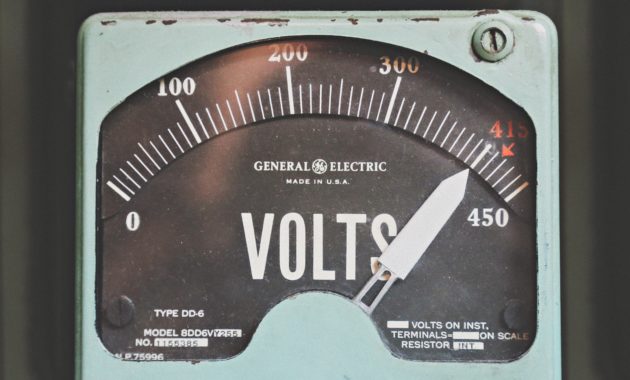
Solar radiation is a source of clean energy.
Solar cells convert solar radiation into electricity and can be found in many different calculators, watches, satellites, and space probes.
When sunlight strikes the junction between two materials in a photovoltaic cell, an electric voltage is generated, which can then be converted into direct current by some mechanism (e.g., batteries).
How is solar energy converted into electricity?

STEP 1: Sunlight activates the panels
A rack-and-panel solar system is a type of structure that houses individual panels, each made up of several vital components.
These include layers and cells constructed out of silicon, frames created from a metal material (typically aluminium), glass casing for maximum protection against the weather or other outside elements such as dirt or debris, in addition to providing safety through transparency.
Lastly, it has wiring which connects all these pieces to make this an efficient form of power production.
When grouped into arrays with similar numbers, they can be placed on rooftops or large outdoor spaces so you can produce more electricity than if just one panel was left alone in its isolated area without any help.
Solar cells, also called photovoltaic cells, absorb sunlight during daylight hours.
They then convert this energy into electricity and store it in the battery bank for use at night or when there is no sunshine.
STEP 2: The cells produce an electrical current
When light from the sun hits a photovoltaic solar cell, it excites electrons to detach themselves and flow through wires.
This generates an electric current that can be used in our homes – so we don’t have to rely on dirty coal or harmful nuclear power plants!
Photovoltaic cells are all around us now: they’re even present on some of those modern smartphones you kids love nowadays.
When sunlight strikes one of these PV panels (which scientists call them), an array of tiny silicon crystals begins absorbing photons like sponges soaking up water droplets after someone just walked by with really wet feet*.
By converting this excess energy into electrical potential**, PV cells provide renewable electricity for building your island nation.
With the help of an electric field, electrons are sent flying in a particular direction. This movement creates electricity and is known as an electrical current.
STEP 3: The electrical energy is converted
As we all know, electricity is a fundamental part of our daily life.
It powers the devices that we use every day, and it needs to be generated for us to have access to energy at any time.
Solar panels are an excellent way of generating clean, renewable solar power. Still, they produce DC, which cannot provide AC currents which most homes rely on as their source for electricity.
This type can only flow in one direction, unlike alternating current (AC) circuits where electrons move back and forth, creating waves or cycles through electric wires carrying out different functions like turning switches off and on, etc…
As you might imagine, with such limitations, there’s been some significant research going into how best to convert these direct-current sources so more people could benefit from them.
DC electricity is a type of power that can change into AC or alternating current. If you ever find yourself with an inverter in hand and some DC power cords nearby, it’s time to get creative!
These inverters are used to convert the DC power generated by solar panels into AC, which can then be shipped out and consumed for use.
Modern systems allow these inverters to work as one extensive system or individual microinverter from behind a single panel providing homeowners with more options than ever before!
STEP 4: The converted electricity powers your home
A solar microinverter converts the electricity we get from our panels to AC. It then runs through your electrical panel and gives the power that you need for your appliances while running on clean energy!
The solar energy system is designed in a way that allows it to generate power just like the electric grid would, so there’s nothing you need to do on your end.
Since you will still depend on an electric utility company for your power, you can draw from the grid to supplement any solar shortages.
STEP 5: A net meter measures usage
A smart electric meter is installed in your home to monitor the production and consumption of electricity.
It can detect if you are using more than what has been generated or vice versa.
That’s why a meter is used to measure the electricity flowing in both directions – to and from your home.
Your utility company will often provide credits for any surplus power you send back to the grid, so make sure that when it’s all said and done, you’re not paying more than what they are paying.
Is solar power a clean energy source?
Solar power is an excellent option for renewable clean energy. It does not emit greenhouse gas emissions, unlike burning fossil fuels like coal and oil, leading to air pollution and climate change.
Solar panels are a creative way to reduce your carbon footprint.
By installing solar panels, you can cut the need for fossil fuels and save money on energy costs in just one step!
Solar panel technology has come so far that they last up to 25 years without any loss of efficiency- meaning there is no downside whatsoever with making this investment as it will pay off right away.
The installation cost may be high at first glance but don’t forget about all those savings from not having power bills every month or needing to buy expensive gas or coal anymore!
The panels are made from recycled materials, so the carbon footprint will continue to shrink.
When was solar power discovered?
Now, in the 21st century, when we can’t live without our cell phones and laptops, solar panels convert sunlight into electricity.
This was a big breakthrough for people who want to lower their carbon footprint while also saving money on bills.
In 1954 photovoltaic technology was born when Daryl Chapin, Calvin Fuller and Gerald Pearson developed the silicon PV cell at Bell Labs 1954 – it’s affordable enough now so everyone has access!
Today, solar-powered satellites allow us to transmit information from any part of the planet.
What is the difference between solar PV panels and solar thermal power generation systems?
Solar panels are installed on the roof, where they harness energy from the sun and turn it into heat.
The stored water gets heated up gradually so that people can enjoy a hot bath at any time of day or night and stay warm in their homes when winter rolls around.
Solar thermal energy, in addition to an increasingly popular renewable power source for homes and businesses alike, can also be used on a larger scale.
Power stations generate the most heat that solar panels can capture at great heights while still being cost-effective.
Antelope Valley Solar Ranch is one such example, with 17 miles worth of mirrors built into its array near Lancaster, California, where it provides enough electricity for 170 thousand people per day!
What are solar farms?

Solar farms are large areas of land where solar panels harvest the sun’s energy to provide electricity for our homes. Solar parks and fields both collect sunlight, but a lot is only made up of one type of panel, whereas a park can contain many different styles.
Solar farms are designed to generate large-scale solar energy.
Localised power production is wasteful, and only a small number of people can feasibly make use of it on their own.
Solar panels have been steadily getting cheaper over the past few decades to the point where they’re almost disposable compared to how much electricity they produce per day.
But with more than half our planet covered by oceans, all that extra space means you still need some way to store your excess during peak times like midday when there’s no sun or at night time.
Both solutions involve batteries (which themselves require expensive materials).
Solar fields work as one central battery: not just storing what we’ve generated today until tomorrow morning so long as everything completes its path uninterrupted without any.
Can solar power be generated on a cloudy day?
The UK may not seem like the best country for generating solar power, but this is only because it doesn’t get as much sunlight.
Solar panels can still harness energy even with less daylight, and there’s plenty to be had in Britain!
The United Kingdom may not look like an ideal place to install a solar panel, given its weather patterns that inhibit all-day exposure.
However, recent installations have shown us how just some amount of light can work wonders on these systems by converting them into viable sources of clean fuel or electricity through photovoltaic conversion.
While the rate at which solar panels generate electricity does vary, they generally work best in direct sunlight.
Solar panels need to be large and of high quality for optimum generation rates.
Solar power can change any household’s energy bill by reducing or eliminating utility bills with installation costs either fully paid off within five years or generating savings faster than expected!
Can the UK power itself using solar cells?
On the 20th of April, 2020, at 5 PM UTC (11 AM EST), electricity generated by solar power reached a record high.
The 9680MW surpassed what is necessary to boil five million kettles!
What are we doing to bring more solar power onto the electric grid?
To keep costs down for customers and increase renewable energy, they are working to overcome two intertwined challenges: balancing the demand with electricity generated and updating the foundations of our current power system.
Several innovative approaches have answered the question of how to go green in regards to power.
Scientists are now working together with engineers, coming up with new ways for electricity generation and consumption alike that have nothing to do.
As part of the Power Potential project, the recent successful test has shown that a solar plant can provide power during the daytime and at night.
When inverters were upgraded to produce more power and use less energy to help stabilise voltage levels on the grid system.
Conclusion
When it comes to an understanding solar power, there are a lot of questions.
We’ve touched on just the basics in this blog post and what we hope is that you now have an idea where to go next for more information or if you want us to help you with your marketing strategy so as not to leave anything out!
Let us know which topics interested you most from reading this article.
Thanks again for reading!